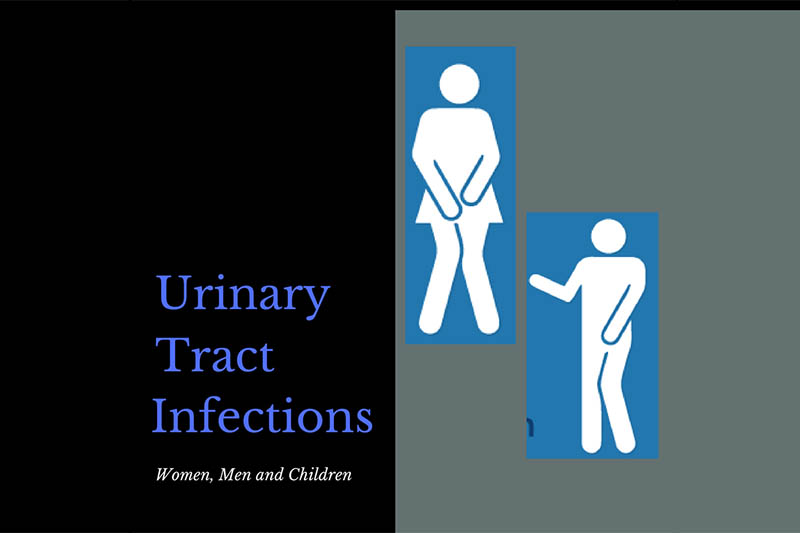
What are UTI’s? Urinary Tract Infections
Do you… Frequently or urgently need to urinate Often only pass small amounts of urine Have Pain or burning sensation when urinating These can be symptoms of urinary tract infections. There

Health screening is an important part of disease prevention. There are many screening tests and examinations that healthy men can undertake to help with detection of diseases such as cancer. Your General Practitioner is well placed to carry out some of these tests, refer you to have other tests, or to advise you on some of the self-checks you can be doing to monitor your health. One of the key roles of your GP is to prevent disease, so they will be only too happy to help you.
The recommendations below often refer to screening for the general population – for men with specific risk factors for a particular disease the recommendations may be different. Your GP will be able to advise you if you are in any doubt.
| Health checks men should have | ||||
| Disease or condition | Who should be tested or examined? | Test/examination | Frequency | Guideline |
| Bowel cancer (colorectal cancer) | People over the age of 50 | Faecal Occult Blood Test (FOBT) | At least every 2 years | Australian Cancer Network, NHMRC, Department of Health and Ageing, RACGP and Cancer Council Australia, 2008 |
| People at increased risk of colorectal cancer, for example, because of family history | Colonoscopy | Usually every 5 years. The age to start depends upon the family history | Australian Cancer Network, NHMRC, Department of Health and Ageing, RACGP and Cancer Council Australia, 2008 | |
| Cardiovascular diseases (CVD), such as heart attack and stroke | People aged 18 to 50 | Blood pressure measurement | Every 2 years if normal | RACGP, 2009 |
| People aged 45 and above and Aboriginal and Torres Strait Islander peoples aged 35 and over at low risk of CVD | Cholesterol and triglyceride blood tests and blood pressure, waist circumference and BMI measurements | Every 2 years | National Vascular Disease Prevention Alliance, 2009 | |
| People at moderate risk of CVD | Cholesterol and triglyceride blood tests and blood pressure, waist circumference and BMI measurements | Every 6 to 12 months | National Vascular Disease Prevention Alliance, 2009 | |
| People at high risk of CVD | Cholesterol and triglyceride blood tests and blood pressure, waist circumference and BMI measurements | You should be reviewed regularly. Your doctor will advise you how often you need to be monitored | National Vascular Disease Prevention Alliance, 2009 | |
| Dental health | Dental check-up | Your dentist should be able to advise you on the timing of dental examinations | ||
| Diabetes: type 2 | People aged 40 and over and Aboriginal and Torres Strait Islander peoples aged 18 and over | Australian Type 2 Diabetes Risk Assessment Tool (questionnaire) | Every 3 years | Diabetes Australia, NHMRC and RACGP, 2009 |
People at high risk of type 2 diabetes:
|
Fasting blood sugar level | Every 12 months | Diabetes Australia, NHMRC and RACGP, 2009 | |
People at high risk of type 2 diabetes:
|
Fasting blood sugar level | Every 3 years | Diabetes Australia, NHMRC and RACGP, 2009 | |
| Glaucoma | Everybody should have their first eye check at 40, unless they have risk factors for glaucoma, in which case they should have their first eye check at 35.
Risk factors include
|
Eye examination | Both groups should have regular eye checks after the first examination | Glaucoma Australia, 2006 |
| Obesity | Adults aged 18 and over | BMI and waist circumference measurement | Every 2 years or in groups at increased risk of obesity every 12 months and in those identified as being overweight or obese every 6 months | RACGP, 2009 |
| Skin cancer – melanoma | Everybody | Self-skin examination | Every 3 months | RACGP, 2009 |
People at high risk of melanoma, e.g.:
|
Self skin examination and skin examination by a doctor, including photography if required | Your doctor or dermatologist will be able to advise how often; full body examination is recommended every 6 months | Cancer Council Australia, Australian Cancer Network, New Zealand Ministry of Health and NHMRC, 2008 | |
| Testicular cancer | Men from puberty onwards. Cancer Council Australia says that it is sensible for men to become familiar with the usual level of lumpiness of their testicles and to see their doctor if they notice a change. Men with a family history of testicular cancer (father or brother) or a personal history of absent or undescended testicles, in particular, should regularly check for lumps or swellings on the surface of the testicles | Testicle self-examination | Cancer Council Australia Position Statement 2004 (reviewed 2008) and RACGP, 2009 | |
| Visual and hearing impairment | People 65 years and over | Eye test and hearing test | Every 12 months | RACGP, 2009 |
| Tests which are controversial or not recommended in the general well population | ||||
| Prostate cancer | Cancer Council Australia does NOT support population-based screening of men with no symptoms for prostate cancer |
|
Cancer Council Australia Position Statement 2005 (updated 2008) | |
| BMI = Body Mass Index NHMRC = National Health & Medical Research Council, Australia RACGP = Royal Australian College of General Practitioners | ||||

Do you… Frequently or urgently need to urinate Often only pass small amounts of urine Have Pain or burning sensation when urinating These can be symptoms of urinary tract infections. There
Disclaimer – Our intent is not to diagnosis but to offer information on therapy choices and practitioners. Information on this site is intended general educational purposes only. Any statements made are carefully referenced and any information, products or services discussed are not intended to diagnose, cure, treat or prevent any disease or illness. Please consult a healthcare practitioner before making a choice.